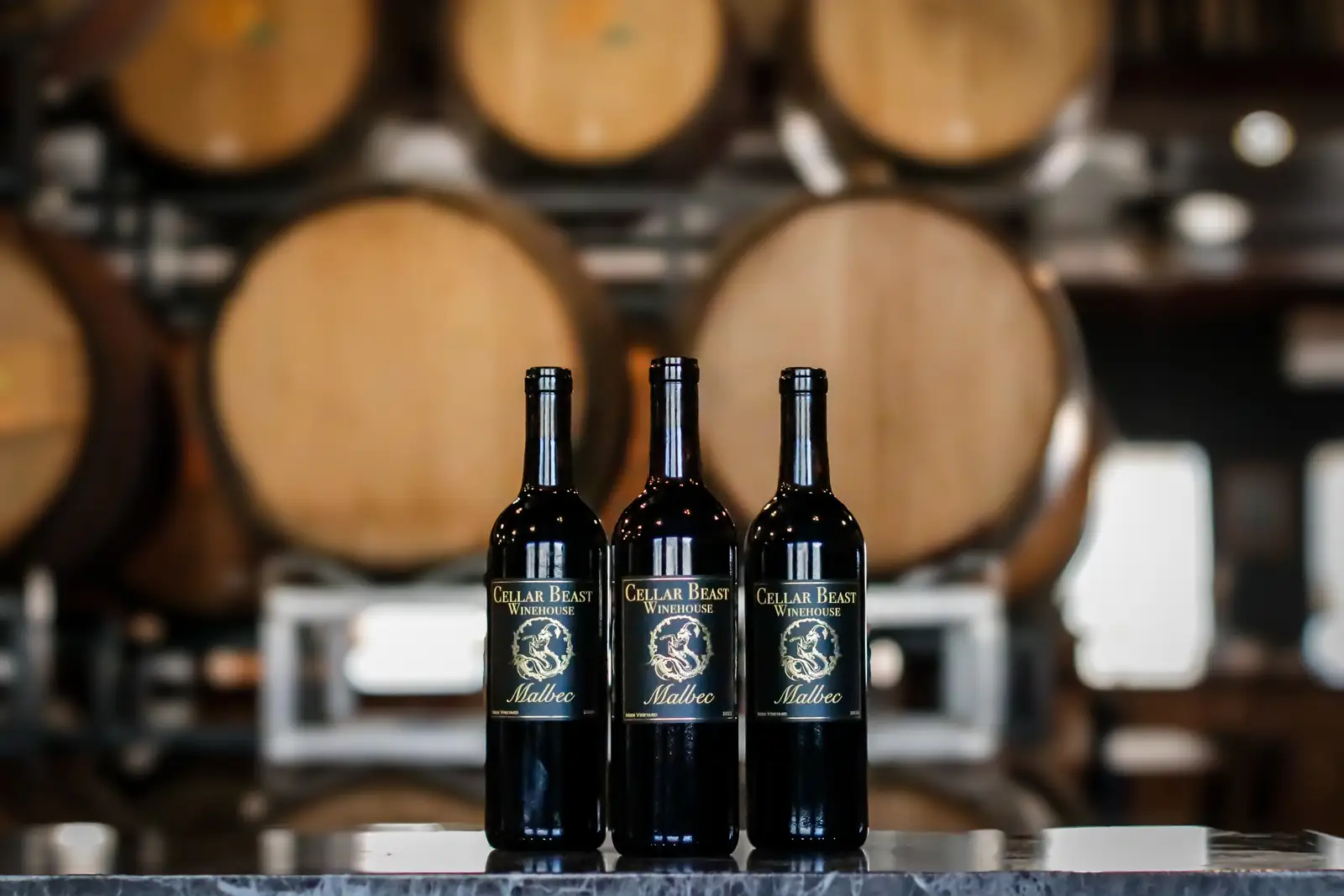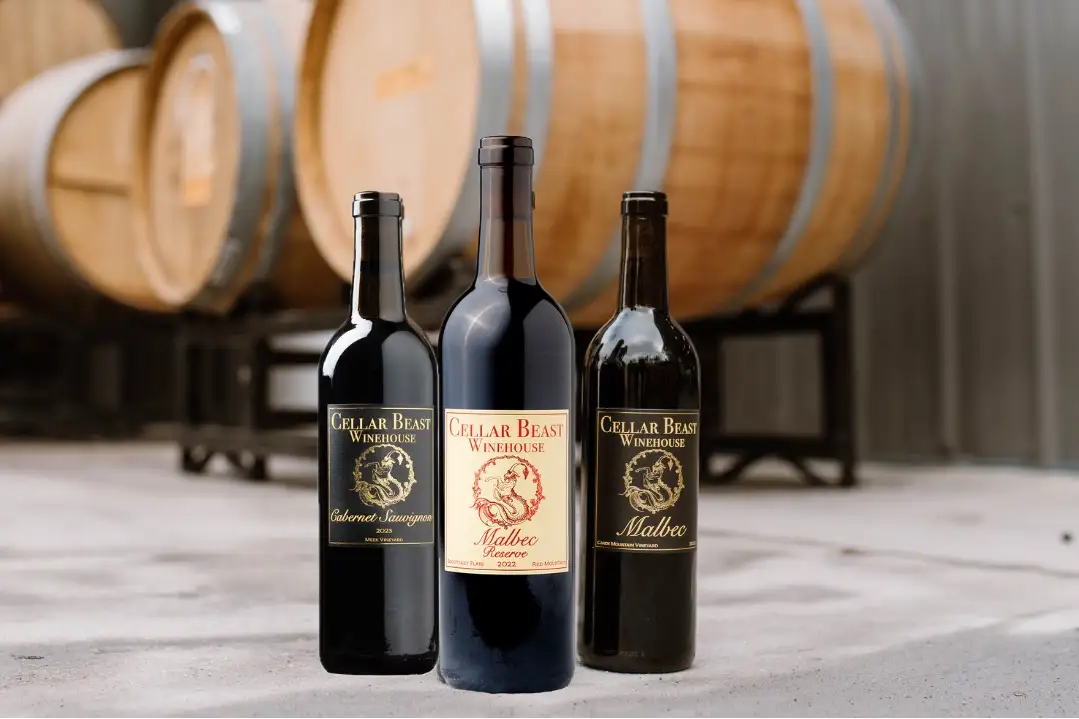Rosé wine can range from dry to sweet, depending on the production methods and grapes used. Many modern rosés are made in a dry style, offering crisp acidity and subtle fruit flavors, while others retain more residual sugar, resulting in a sweeter taste. Whether you prefer a crisp acidity with fruity aromas or a more prosperous, sweeter rosé wine, understanding the sugar content and production methods can help you find the perfect bottle.
At Cellar Beast Winehouse, our Cellar Beast Rosé 2023 is crafted with the perfect balance of fruit flavors, fresh strawberry notes, and a dry finish, making it ideal for any occasion. If you want to explore pink wine further, book a guided tasting with our sommeliers and experience the delicate flavor profile of our handcrafted wines. Learn more about Wine 101 here.
What Determines Rosé Wine Sweetness?
Several key factors influence the sweetness of rosé wine:
- Winemaking Process: The fermentation process determines the residual sugar content. A longer fermentation converts more grape sugar into alcohol, resulting in dry rosé wines, while shorter fermentations leave more sugar, producing sweet wines.
- Grape Varieties Used: Different grape varieties, including Pinot Noir, Grenache, Sangiovese, and White Zinfandel, contribute to varying levels of fruitier flavors and sugar content.
- Residual Sugar (RS) Levels: The amount of sugar left after fermentation directly impacts whether a wine is dry or sweet.
Rosé Wine Sweetness Scale:

Types of Rosé Wine and Their Sweetness Levels
- Dry Rosé Wines: Provence Rosé, Tavel, Sangiovese Rosé, Pinot Noir Rosé - Known for their crisp acidity, fresh greens, and subtle differences in fruit flavors.
- Semi-Sweet Rosé Wines: White Zinfandel and some Grenache Rosés —These have a refreshing taste with balanced acidity and a fruit-forward style.
- Sweet Rosé Wines: Pink Moscato, Rosé d’Anjou - These wines have a higher sugar content and are perfect for those who enjoy sweet wines with floral aromas and fruitier flavors.
Our Cabernet Franc Rosé offers a dry finish with fresh strawberry notes, ideal for any occasion.
Is White Zinfandel a Rosé? (Common Misconception)
Yes, White Zinfandel is a type of rosé wine, but it differs from dry varieties due to its residual sugar content and production methods. It is often sweeter and fruitier and has a lower alcohol content than traditional dry rosé wines. Unlike bone dry rosés, White Zinfandel undergoes a stuck fermentation process, leaving behind more sugar, giving it a pink color and a sweet, refreshing taste.
How to Choose the Right Rosé Based on Sweetness Preference
- For Dry Wine Lovers, Opt for bone-dry rosé wines like Cellar Beast Rosé 2023, a signature pink wine crafted using the Saignée method with a crisp finish and fresh strawberry notes.
- For Those Who Enjoy Balanced Sweetness: Try off-dry rosés like Grenache Rosé, which offer fruit flavors with a hint of spice and moderate acidity levels.
- For Sweet Wine Drinkers: Choose sweet rosé wines like Rosé d’Anjou, known for its floral notes and delicate flavor profile.
Our Cellar Beast Rosé 2023 offers a dry finish with fresh strawberry notes, ideal for any occasion.
Experience Cellar Beast Rosé 2023
Indulge in the crisp elegance of Cellar Beast Rosé 2023, a vibrant wine sourced from Washington's Yakima Valley grapes. Crafted using the Saignée method from six select red varietals, this rosé offers bright aromas of wild strawberries, citrus zest, and floral notes. Its fruit-forward palate and balanced acidity make it an ideal choice for summer sipping. Aged in stainless steel to preserve its freshness, it pairs beautifully with seafood, salads, and light pasta dishes. With an ABV of 12.7% and a 750ml volume, this rosé exemplifies Cellar Beast's commitment to quality winemaking. This elegant rosé wine boasts flavors of strawberry, citrus zest, and floral aromas. It is aged in stainless steel to preserve its fruit flavors and crisp acidity, resulting in a dry finish with a balanced acidity level. With an ABV of 12.7%, it pairs beautifully with spicy food, Asian dishes, summer picnics, and lighter dishes.
Book a Guided Tasting
Discover the perfect bottle of rosé wine with our expert sommeliers. A guided tasting at Cellar Beast Winehouse allows you to experience the nuances of rosé wine, from the fermentation process to the variety of grapes used in production.
Conclusion
Rosé wine offers a broad range of sweetness levels, from bone dry to sweet, depending on the production process, grape varieties, and residual sugar content. Whether you enjoy drier wines or sweet rosé wines, understanding the different types of rosé can help you find the perfect wine for any occasion. Cellar Beast Rosé 2023 today or book a guided tasting to explore our handcrafted selection.
Explore our range of handcrafted rosé wines today!
About the Author: Kim McCullough
Kim McCullough is the Owner and Co-Founder of Cellar Beast Winehouse, where her passion for wine, sustainability, and entrepreneurship drives every vintage. A certified Level One Sommelier from the Wine School of Philadelphia, Kim combines her deep knowledge of enology with a refined palate, honed through extensive training in wine regions, grape varieties, and sensory analysis. Her expertise is crafting terroir-inspired wines that capture the essence of soil, climate, and harvest. Kim works closely with top growers in premier wine regions to source exceptional grapes, ensuring every bottle reflects the vineyard’s unique character. Her favorite Cellar Beast creations, like Blanc de Noir and Primitivo, highlight her dedication to handcrafted, sustainable winemaking. In addition to her role as a winemaker, Kim manages a dynamic team, oversees HR and commercial sales, and designs wine-pairing experiences that elevate dining moments. Her background as an educator brings a unique perspective to Cellar Beast, fostering a culture of learning and innovation that resonates with wine enthusiasts and newcomers alike. Kim lives in Allentown, PA, with her husband and three daughters. Through her work at Cellar Beast Winehouse, she continues to blend artistry, science, and education to create wines that delight and inspire.




